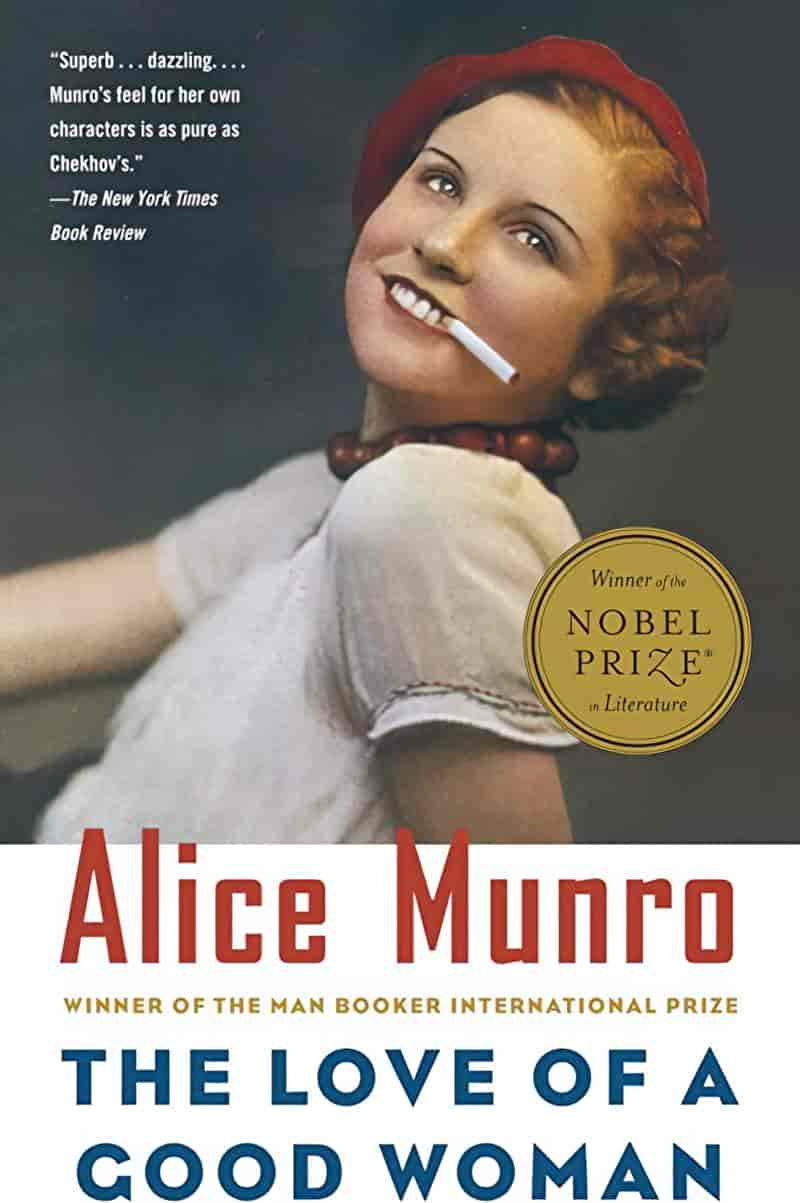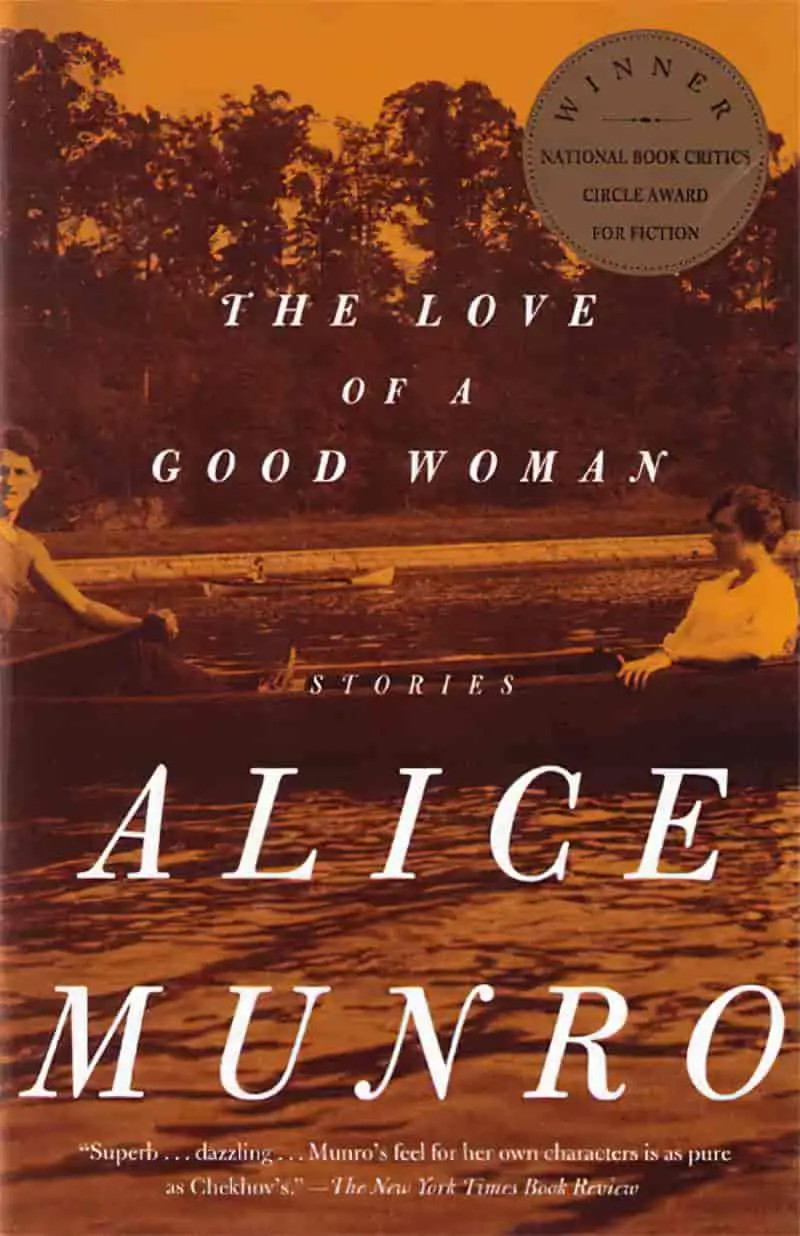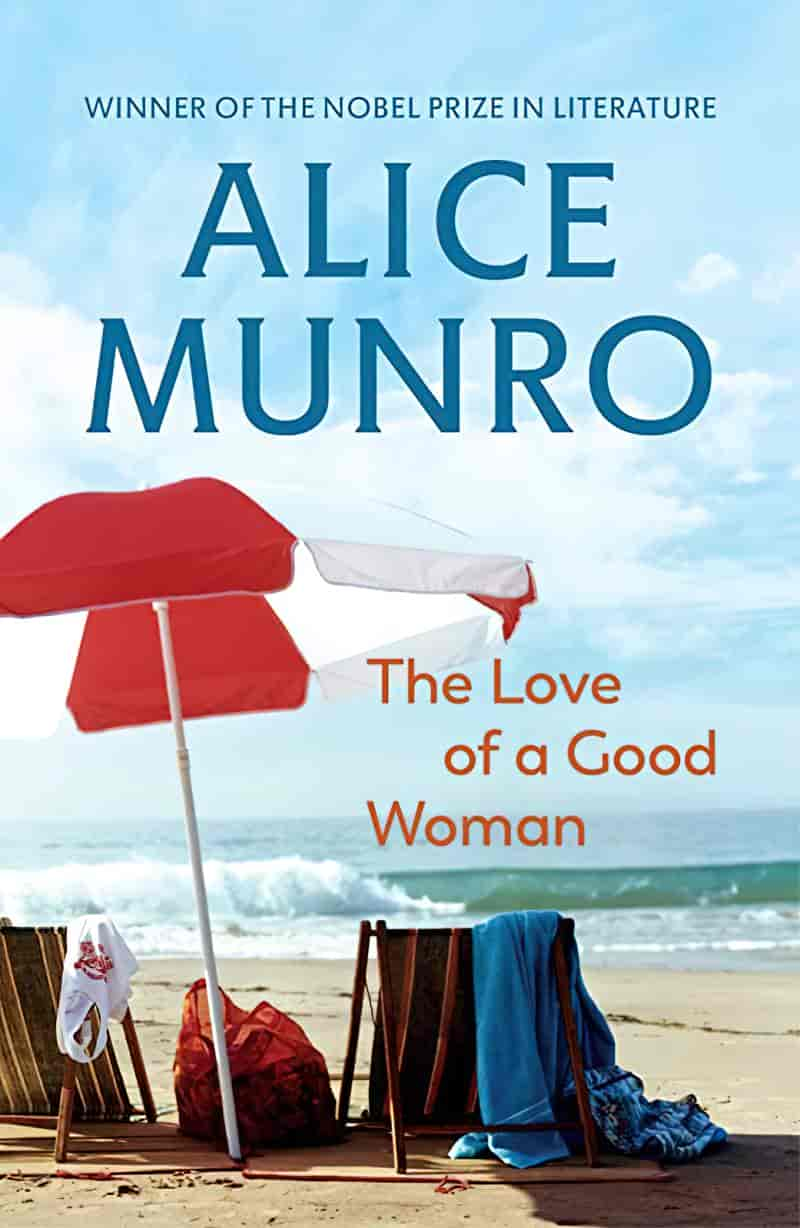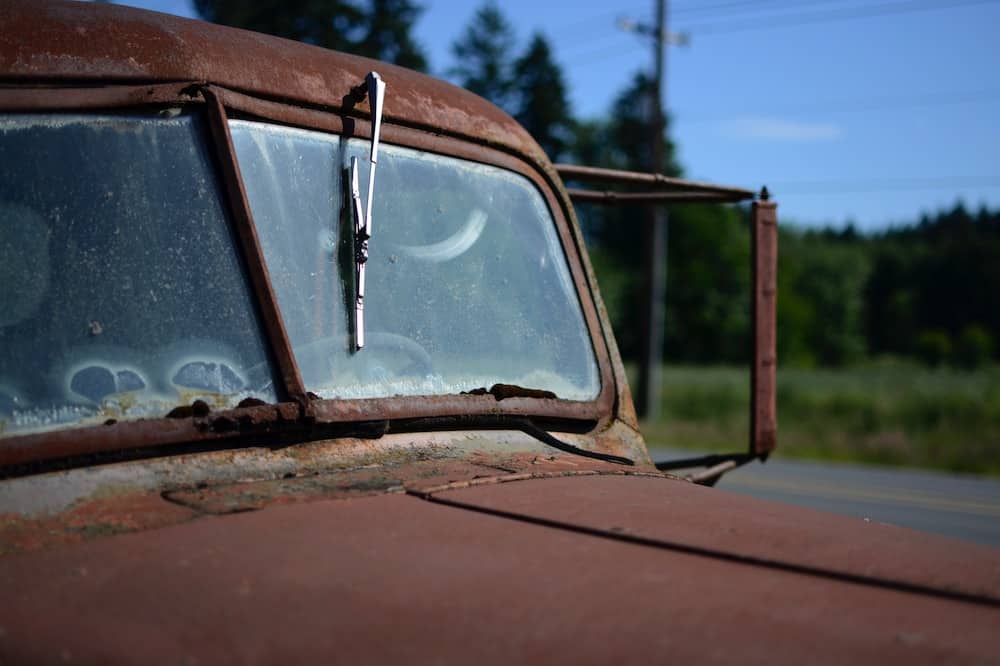“Save The Reaper” (1998) is a short story by Alice Munro, included in the collection For The Love Of A Good Woman. This story is a re-visioned homage to Flannery O’Connor’s “A Good Man Is Hard To Find“.
THE LOVE OF A GOOD WOMAN (1998)
- “The Love Of A Good Woman” — a story revolving around a crime but not a crime story. Reminiscent of Stand By Me. Also in the December 23, 1996 edition of The New Yorker.
- “Jakarta” — not actually set in Jakarta. A story of an old woman whose husband went missing, and also about the so-called ‘free love’ of the 1960s, which afforded far more freedom to men.
- “Cortes Island” — a symbolic island standing in for the psychology of newly wed isolation. Also in the October 12, 1998 edition of The New Yorker.
- “Save The Reaper” — a re-visioning of Flannery O’Connor’s “A Good Man Is Hard To Find”. Also in the June 22, 1998 edition of The New Yorker.
- “The Children Stay” — What did divorce look and feel like when divorce was brand new? Also in the December 22, 1997 edition of The New Yorker.
- “Rich As Stink” — Focuses on an adolescent girl. Some commentators call her ‘precocious’ but I think she is a typical 11-year-old.
- “Before the Change” also in the August 24, 1998 edition of The New Yorker
- “My Mother’s Dream” — Critics don’t love this one, but I do. I read this short story as a commentary on how it takes a village to raise a child, and when any given mother doesn’t measure up as parent, other women can step in. Together, caregivers can band together to create a ‘whole’, and bring up a perfectly rounded and cared-for child, but alone? No. And we shouldn’t expect mothers to be perfect.




The night before reading “Save The Reaper” I happened to watch Stacey Dooley’s documentary Canada’s Lost Girls, and this has affected my interpretation. Others see the hitchhiker in Munro’s story as dangerous, but that may be inverting the victims, or imposing a too-simplistic binary on the dynamics.
I had heard about the shocking under-investigating of the murder of indigenous Canadian woman but I didn’t know there’s a stretch of road called “The Highway of Tears“, so called because First Nation girls are required to hitch-hike along this road from their separate communities — to go to the doctor, to pick up groceries, to visit relatives — and are immensely vulnerable to travellers with malevolent intent. Many women and girls have been murdered along this stretch of road. Police believe most of the crimes are committed opportunistically, by white men and by First Nation men as well. (I wondered at the definition of ‘opportunistic’. I suspect it means, ‘If I can find a girl to get in my car with me, I’ve always wanted to know what it’s like to rape and murder a vulnerable person.’)
HITCH-HIKING IN STORIES
When characters in fictional worlds pick up hitch-hikers things rarely go well for them. See, for instance, Thelma and Louise. The plot in which a hitch-hiker turns out to be bad is so common there’s a name for it — The Hostile Hitch-hiker Trope. But the stats would indicate, especially for certain groups (ie. young, female, aboriginal, addled by substances) the risks of doing the hitch-hiking are far higher than giving someone of that description a lift. The Freakonomics podcast looked into this back in 2011 and found the risks of picking up hitch-hikers are overblown.
In “Save The Reaper”, Alice Munro conveys this fear of hitch-hikers. Also, by subverting a thriller-like plot, she conveys equally that the young hitch-hiker is vulnerable. Set up a trope and bust it, in other words.
Where I come from, hitch-hiking is rare but not illegal. It was a lot more common when I was a young adult. (I didn’t realise that in many states of America, hitch-hiking is illegal.)
STORYWORLD OF “SAVE THE REAPER”
- Toronto in an apartment (past)
- A holiday house at Lake Huron shore (present)
- A run-down house in the middle of nowhere near Lake Huron (wrapper story)
CHARACTERS IN “SAVE THE REAPER”
Sophie — Was studying archeology when she became pregnant with Philip. Now a receptionist in a doctor’s office.
Ian — Daisy’s husband, an urban geographer
Philip — Sophie’s son, four years older than Daisy. His father is not Ian, but a young Irish man who had recently decided not to enter the priesthood and was traveling around North America.
Daisy — Sophie’s toddler-aged daughter. Age-wise, this character is an amalgamation of the daughter and the baby in Flannery O’Connor’s short story.
Eve — Sophie’s mother. An actress. ‘Freckly, sun-wrinkled arms, gray-blond frizzy curls held back by a black hairband.’ Shared an apartment with Sophie and Philip when Philip was a baby. Eve looked after him. But Eve hasn’t seen Sophie since she married Ian. In some ways Eve understands people well and adapts accordingly. For instance, she knows her son-in-law prefers information over opinions and reminiscences so gives him information instead. This could also describe the narrative style of this story, in which we are given information, not interpretation. But how well does Eve really understand people?
In her depiction of Eve, the protagonist of “Save the Reaper,” Munro conveys an older woman’s sense of familial estrangement. In Hateship and Runaway she is exploring in great depth themes of exile and alienation, most poignantly in the triptych of “Chance,” “Soon,” and “Silence,” from Runaway; she is also examining other ways whereby one can be estranged— by the fugacity of memory, and by its loss.
Isla Duncan
Thomas — Sophie’s father, from Kerala, originally from the Southern part of India. He was in Canada on a doctor’s fellowship at time of conception (on a train) but had a young family back at home in India.
Herb — Eve and Philip are playing a game and randomly follow this guy to an out-of-the-way hoarded up house of drunkards. Herb does not appear to be right in the head.
Harold — One of the men inside the house, drunk, rude, dismissive, grumpy.
The girl — highly vulnerable, a sex worker, drunk, no money, no clothes of her own.
WHAT HAPPENS IN “SAVE THE REAPER”
A grandmother (Eve) who hasn’t had a close relationship with her daughter (Sophie) in some years suggests she and the daughter and her two grandchildren holiday together near a beach. The daughter cuts her trip short and requests that her husband come pick her up early because the holiday with the mother is driving her mad. While Sophie is at the airport picking up husband, Eve takes her two young grandchildren out on a drive. This adventure bookends the short story. Philip, who is seven, insists Eve follow a beaten up truck because they play a game in which they imagine all sorts of fantasy situations. Eve ends up accidentally following this truck all the way to a house, doing as her seven-year-old grandson has instructed.
Eve remembers from years ago a wall decorated in broken glass which was somewhere around here, perhaps. Stuck in a rundown farm sort of place, and this time against her grandson’s wishes, she gets out to ask the man about it. The man doesn’t know, but invites her inside to ask some other guy. But when Eve enters the house she realises her mistake — it’s a hoarded-up dump of a house, cocooning a group of drunk men playing cards. The vibe is menacing.
She escapes with her two grandchildren without real incident, but on her way out, a young woman gets into the car with her, plonking herself in the front passenger seat. This young woman is drunk, without her own clothing and seems to have been taken there for sex. She makes a pass at Eve, which touches her in some surprising way. Eve drops the girl off on the highway and gives her twenty dollars. She tells the girl to come to her house if she fails to get a lift. This assuages Eve’s conscious in the moment, and leaves her with the uneasy feeling that this may indeed happen, later that night.
When Eve’s daughter and son-in-law get to the house Eve tells them about the journey, but leaves out almost everything that happened. She looks to Philip, her seven-year-old grandson and knows by the look on his face that he won’t say anything to his parents about their scary afternoon, either. He has previously in the story let on to Eve what Sophie told his father on the phone — that she can’t wait to get away from Eve — so this marks a development in his maturity.
STORY STRUCTURE OF “SAVE THE REAPER”
NARRATION
If you love to read between the lines, you’ll appreciate “Save The Reaper”. Here are a few things we are not told at all, or which Munro holds back:
- We don’t know why Eve and Sophie aren’t on great terms. Eve doesn’t seem to know either, and Eve is our viewpoint character. The third person narrator is close to Eve, does not betray her, and conveys to the reader only the facts. Interestingly, this is how Eve has learned to speak to her son-in-law. Is this Munro signalling to the reader that she, as author/narrator, will leave out her opinion, in a cinéma vérité kind of way? (There’s probably a name for this when it applies to the written word — ‘observational narration’?) As part of this, we are given no clue as to why Sophie is hating this holiday. Another author might at least show the two women in conflict.
- Munro does not want the reader to know straight away that Eve is Sophie’s mother. I believe this is Munro railing against Flannery O’Connor’s short story, in which the adult women are known only by their roles in relation to others — The Grandmother and the daughter-in-law. In Munro’s story, they are at first presented as same-age friends—perhaps Eve is looking after Sophie’s baby because they are in a same-sex relationship? That may just be my modern take. (This story was published in the 1990s, before most readers would’ve jumped to that.) Within the text, the narration tells us that Eve sees herself as more of a friend to her daughter. This leaves me with all the clues I need — I deduce Sophie’s issue with Eve is that Eve has not mothered her in the way she wishes she was mothered. With her grandson, Eve demonstrates to the reader a wonderful playfulness, but the game ends in danger and half-truth. If this described your entire childhood, such capriciousness would not be so funny.
THE TITLE
What’s with the title? There’s the obvious connection with death — reaper as short for ‘grim reaper’. In Flannery’s short story, I interpret The Misfit in his black hearse as a worldly Grim Reaper. (I doubt I’m the only one.)
But the more basic meaning is at play here — Eve has had her chance at parenthood. It’s only now that she’s a grandparent that Eve gets to see the end result of her own parenting style. Sometimes grown children use their own parents as negative role models.
SHORTCOMING
Within the story, “Save the Reaper” is a take on a line out of the famous poem “Lady of Shalott,” though Eve can’t remember the lines correctly. Likewise, it’s this story is not being presented in full — is this due to Eve’s failing memory, and the fact the narration is close third person via Eve?
Alice Munro often explores how memory works. Her observation seems to go something like: We misremember things from long ago, and life experience itself changes what we think we know about the past. This is backed up by scientists who study such things.
Every time you remember an event from the past, your brain networks change in ways that can alter the later recall of the event. Thus, the next time you remember it, you might recall not the original event but what you remembered the previous time.
Your Memory Is Like A Telephone Game
If Eve herself has forgotten the details of how she brought her daughter up (my guess: haphazardly), no wonder she doesn’t understand why Sophie has an issue with her.
DESIRE
Eve is a people-pleaser — she wants to make the most of her short time with her grandchildren and fully engages with the game devised by the seven-year-old. Ideally, she would like to finish out the holiday with her daughter as well, and make it an annual thing.
Her deeper desire: She wants to play happy families, and convince herself that everything is fine.
OPPONENT
Mother and daughter are passive Opponents.
The outside Opposition arrive in the form of the men inside the house, who might as well be men inside the woods of O’Connor’s story. The hoarded-up house is to me a metaphor for Eve’s subconscious, and all of the accumulated memories she has haphazardly accumulated over a lifetime.
The men are whittled down to just one woman, and this woman seems to morph before us — from a scary man to a scary woman, to a vulnerable woman to a daughter figure. By the end of the encounter, Eve isn’t sure if this girl is going to turn up at the house. Ditto for her own actual daughter. It seems clear that this girl is a proxy for her own daughter, and her own conflicted ideas about Sophie.
PLAN
Eve wants to reconnect with her daughter so organises a family holiday. On this holiday she will do her best to have a nice time, and do as her daughter and grandchildren want.
This narrows down to a game in which Eve pursues an old truck. Half of this wrapper story is Eve chasing the truck — half of it is Eve metaphorically being chased by the hitch-hiking girl who jumps into her car uninvited. First she chases, then she is chased. This may mimic the tug-of-war nature of the relationship she has had with her own daughter over the years.
BIG STRUGGLE
The escape sequence
ANAGNORISIS
As in Flannery O’Connor’s “A Good Man Is Hard To Find”, this isn’t handed to us on a plate.
The grandson has a Anagnorisis regarding truth — people don’t always blurt out the truth. They leave bits out when telling a story.
This young child’s realisation may be connected to Eve’s mature version, not spelt out, but implied — she may have realised at this minute that she hasn’t just omitted parts of today’s story — she has been deliberately leaving out all sorts of things which have led her and her family to this stand-off.
NEW SITUATION
The reader is not let in on the exact details of Eve and Sophie’s issues — we have been given the broadest overview: Eve breezily forgets things from the past; Sophie, as Eve’s child, has had Eve’s life choices thrust upon her, imprinting who she is as a human being, and it frustrates the hell out of her that Eve refuses to ‘remember’ all of that backstory, insisting that they spend time together, pretending everything is fine.
I doubt Sophie will be back holidaying with Eve next year and beyond, because it was the boy who had the realisation, not Eve. However, it’s possible Eve has taken the first step today, which may lead to a later acknowledgement of past hurts.
Header photo by Nick de Partee

